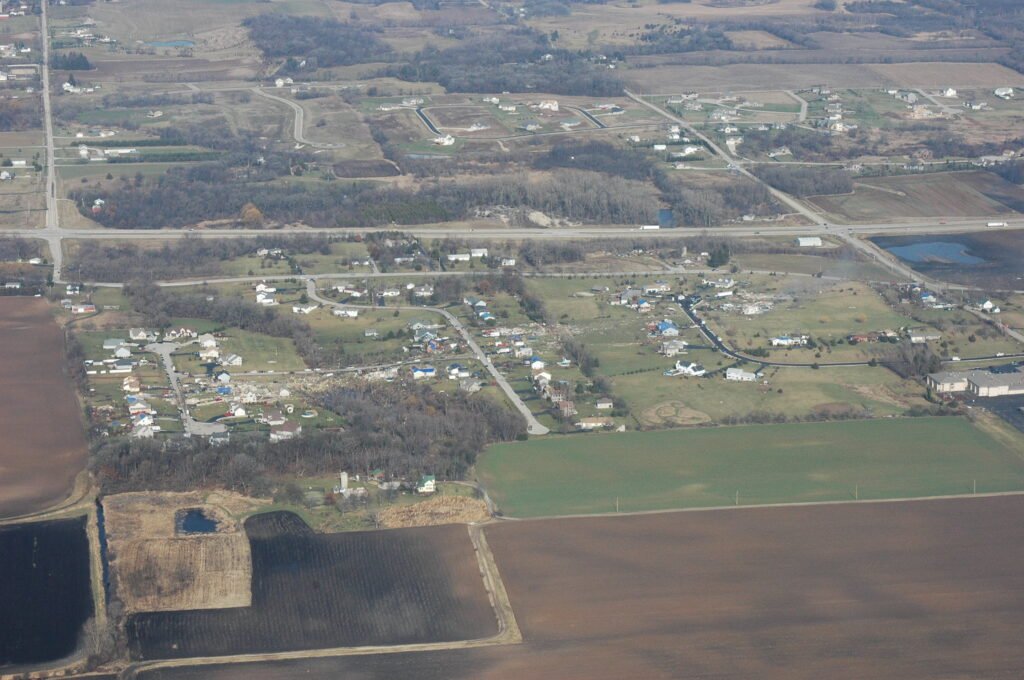
January 7th 2008 – A Tornado Meets a Train
January 7th, 2008 was the apex of an unseasonably warm early January weather pattern in the Chicago area. Chicago’s official site for weather observations, O’Hare airport, recorded a record high of 65 degrees that day, just two degrees shy of the all-time high temperature for the entire month of January. Nearby, Gary, Indiana hit 70 degrees that day.
Meteorologists had been predicting rain and thunderstorms in a pattern more typical of early May than January, but early on, no one could foresee that tornadoes would be accompanying the storms.
As the storms intensified and fired up over central Illinois, Tornado Watch #1 and #2 were issued for central and northern Illinois/southeast Wisconsin. The National Weather Service numbers tornado watches sequentially across the entire United States each year, and this was the first time that the first and second tornado watches of the year occurred in Illinois, as the only area of the US where tornadoes are common in January is in the Southeast.
Weather conditions deteriorated very quickly in the early afternoon as a storm system approached the area. And just before 3:30pm near Poplar Grove, IL, a tornado formed.

Image: Radar at 3:25pm on 1/7/08. NWS Chicago
The storm moved northeast along a line running just north of Poplar Grove, Capron, Harvard, Hebron, and Richmond, before moving across into Wisconsin and weakening significantly. At its strongest, the tornado measured an EF3, with sustained winds of 136-165mph.

Map of the path of the tornado. Image: NWS Chicago.
One of the most striking visuals from the storm was the havoc it wreaked on a Union Pacific train that happened to be on its journey during the tornado’s formation. The tornado derailed the train and caused a hazardous materials (hazmat) spill, necessitating an evacuation. This incident captured the nation’s attention.
The video is below, and you may have already seen it before.
The storm caused significant destruction of property along its 100-yard width in both Illinois and Wisconsin, but it did not result in any fatal injuries being attributed to the storm. Nonetheless, four people were killed in tornadoes as part of the larger severe weather outbreak in the Southern US.

Ground-level view of house northeast of Poplar Grove destroyed by EF3 tornado. (NWS Chicago)
Alongside the tornado outbreak, these storms caused substantial flooding, with the village of Watseka, IL, bearing the brunt of the impact. The timing could not have been more unfavorable, given that less than two weeks later, the region encountered subzero temperatures, rendering the cleanup efforts following the floods exceptionally challenging. Consequently, numerous ice jams formed along rivers in northern Illinois, and many flooded areas remained frozen in place until the Spring thaw.
The only other tornado to hit Wisconsin in January was in 1967, according to the National Weather Service, during a similar day of unseasonable warmth. Northern Illinois has had a similar experience with tornadic activity during the month of January, although when one travels to the southern part of the state, severe weather in the winter becomes more common, although still quite uncommon in comparison to the springtime.